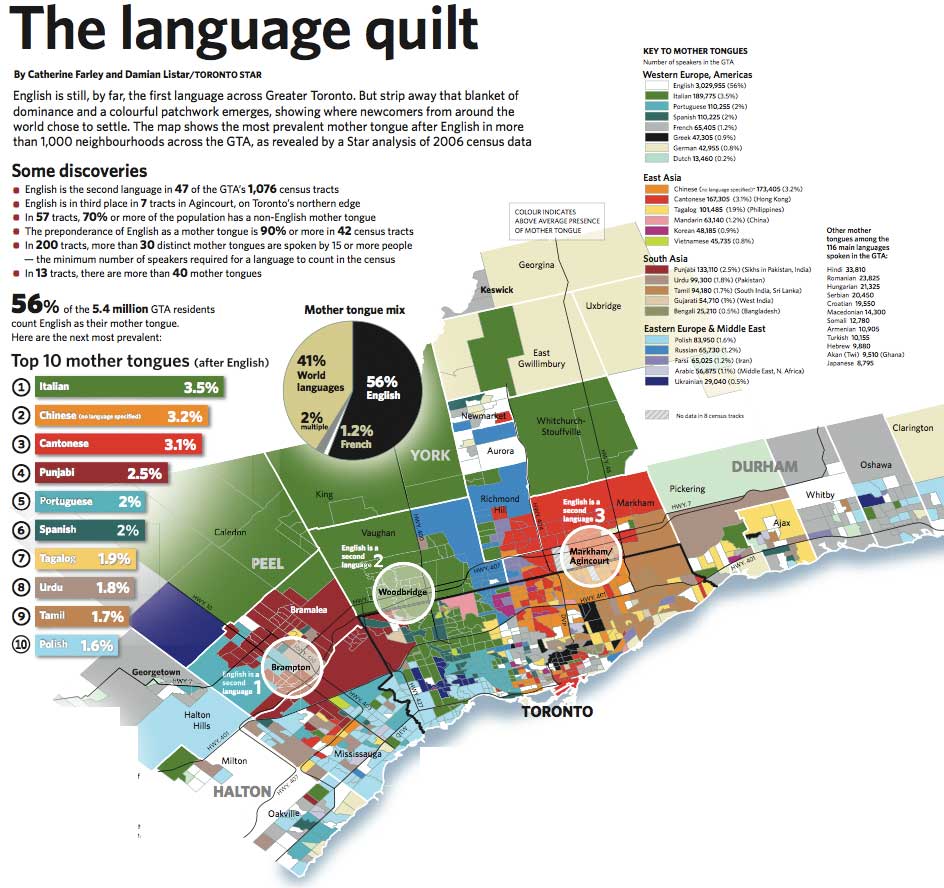Two weeks ago, using newly-released data from the 2006 census, the Toronto Star created a map showing the dominant language (after English) in every census tract in Toronto. The result is a fascinating ethno-linguistic portrait of the city, perhaps the best visual representation of the city’s diversity I have ever seen.
I wish someone would do the same for Montreal. The closest we’ve gotten are maps showing which census tracts are mostly anglophone, francophone or allophone, but that is hardly a good representation of the city’s true linguistic diversity.
Still, even a map like the one the Star produced would barely capture Montreal’s linguistic complexity — this is a polyglot metropolis if there ever was one. Between 2001 and 2006, the proportion of trilingual Montrealers rose from 16.5 to 18 percent, making Montreal the most trilingual city in Canada. In Toronto, by contrast, 10.5 percent of the population is trilingual.
You could draw a linguistic map of Montreal based on the most commonly-spoken language, after French and English, in each census tract. It would be a cool way of mapping the city’s linguistic space. But what impact would our high rate of trilingualism have on this? How does it change the way we relate to the city?


